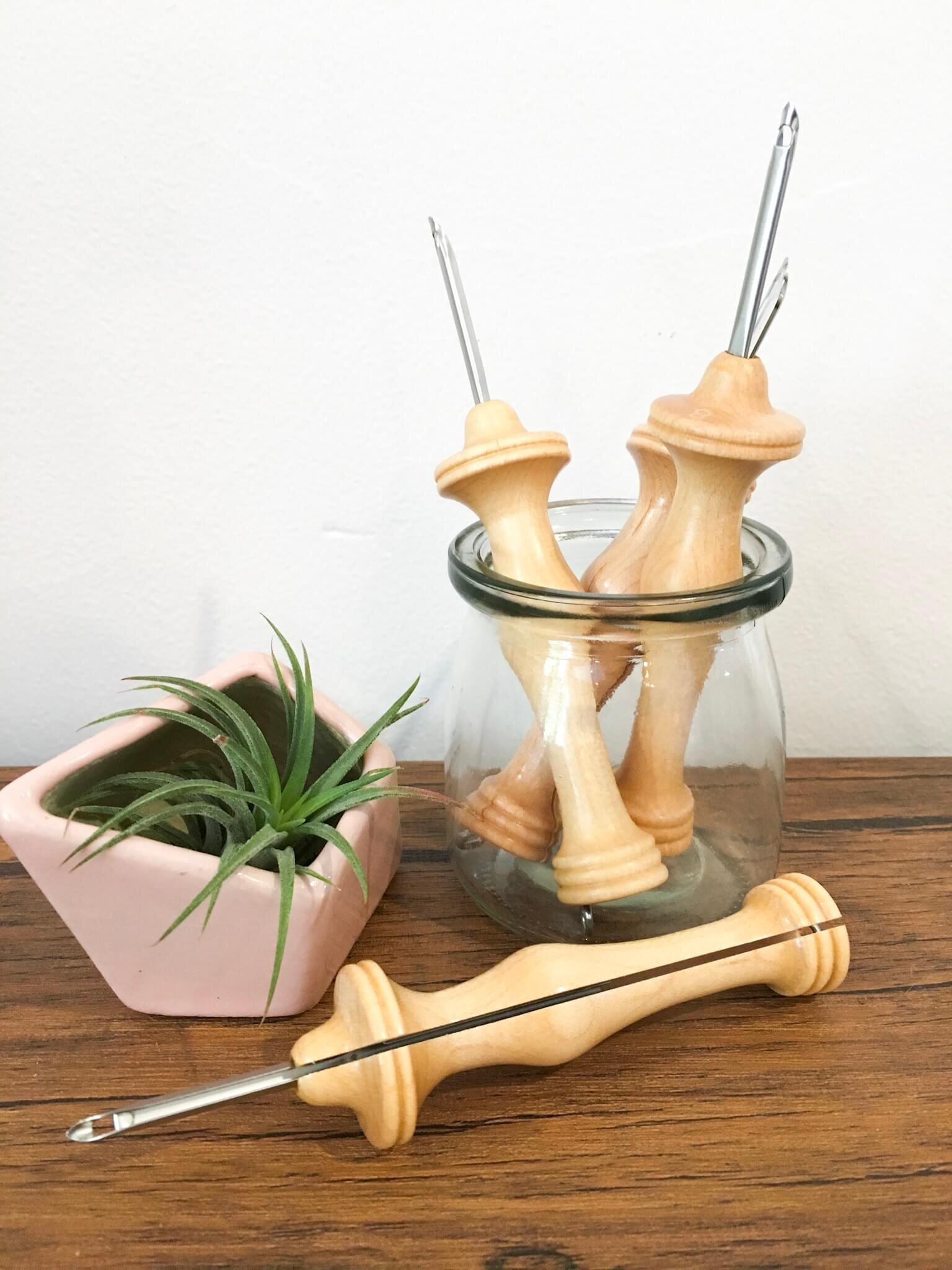What's the difference between the Oxford #10 Regular and Fine?
The Oxford Fine (left) and Oxford Regular (right)
Oxford Fine has a metal ring at its base
Oxford Numbering System
So you have decided to purchase the Oxford Punch needle but how do you know whether you want the Regular or the Fine? And what does #10 refer to anyway?
Oxford Regular vs Oxford Fine
The terms ‘Fine’ and ‘Regular’ refer to the width of the needle shaft. This determines the size of the hole the needle will make and the weight (thickness) of the yarn that the needle can hold.
The Oxford Fine is ideal for medium weight yarn, roughly 8ply to 12ply in Australia. You can also use double strands of thinner yarns together. The Oxford Fine has a metal ring at its base to hold finer yarns.
The Oxford Regular is perfect for your chunky squishy yarns - bulky 12 ply, pencil roving yarn, rug yarn or even fabric strips.
My favourite needle is the Oxford Fine as it suits the vast majority of the yarns available in Australia and therefore the largest range of colours to use in my designs.
Oxford Numbering System
The Oxford numbering refers to the height of the loops and is determined by the needle length.
The Oxford #10 Fine and Oxford #10 Regular will both produce loops that are 1/4 inch or about 6.3mm. This is the most popular size needle as it produces a lovely flat stitch as well as a loop stitch.
The tallest loops are made by the Oxford #8, which produces 1/2 inch loops whereas the smallest loops are made by the Oxford #14. To be honest, it is difficult to see a big difference between the Oxford number sizes and if you are a beginner, I would just stick to the #10.
How do I know which Oxford needle to purchase?
If you are choosing between Oxford needles, the easiest way to decide is by the wool - if you want to use medium weight wool, then choose the Fine. If you want to use super chunky or fabric, choose the Regular.
See, easy peasy right?




